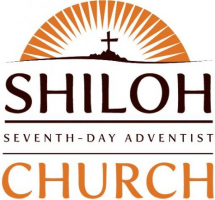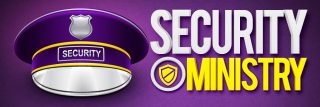According to Adventist Risk Management and the North American Division, every church should appoint a Church Safety Officer to ensure the safety of those who visit our facilities.
Here's is a Job Description for the person who may be asked to fill this role.
Church Safety Officer: Job Description
A. In recognition of the pastor’s leadership role and responsibility in loss control, it is recommended that the pastor appoint a head deacon or another qualified individual as the Church Safety Officer.
B. The Safety Officer should be organized, possess a knowledge of the local church organizational structure, and know the church membership. In addition, he/she must be able to get along with people, demonstrate sound and mature judgment, and respect the strict confidential procedures associated with various aspects of accident review and investigation.
C. The Church Safety Officer shall be given active membership on the church board.
D. A safety committee should be appointed to support the Safety Officer and assist in carrying out all aspects of the loss control program for all church activities.
Safety Officer Objectives
The primary objective for the Church Safety Officer is the prevention of accidents. The Safety Officer with the assistance of the safety committee can help the church achieve a position of taking corrective action consistently after each accident, thereby reducing major loss causes at the church.
Meetings
The Church Safety Officer is to meet with the safety committee on a regular basis. Minutes should be recorded on at least a quarterly basis. (Note: Where a church is too small to adequately form a safety committee, one option is to have safety concerns addressed by the Church Safety Officer during monthly church staff/board meetings.
Controlling Accidents
A. The primary method of controlling accidents will be formal investigation and review of all accidents at the church both actual accidents and near miss accidents.
B. At each regularly scheduled meeting, the safety officer is responsible for providing the following information:
1. What was the injured person doing?
2. How were they injured?
3. What unsafe act was committed?
4. Was there a hazardous condition?
C. In addition to injuries to persons, property losses should be investigated by the Safety Officer to determine such items as:
1. Description of the property.
2. How was the property damaged?
3. Was there an unsafe act?
4. Was there a hazardous condition?
5. Where possible, supply a photograph of damaged property.
D. The Safety Officer shall assist the safety committee with determining the underlying causes of all accidents by using the following procedures:
1. Visit the scene;
2. Interview witnesses to the accident;
3. Check for causes resulting from anyone’s actions, dangerous practices, inability, disobeying rules, etc.;
4. Check for poor housekeeping;
5. Determine if there was defective equipment;
6. Determine if there was improper apparel;
7. Record information of any other poor conditions.
Actions to Avoid
A. Attempting to pin the blame on an individual;
B. Assuming there is just one cause for an accident;
C. Assigning causes of accidents which are too general or vague;
D. Determining causes of an accident without investigation;
E. Attempting to take the place of the church board/administration in corrective action;
F. Any signed, written statement or description of the incident by witnesses, or persons involved;
G. Investigation of sexual misconduct incidents;
H. Release of information to anyone other than a claims representative of Adventist Risk Management, Inc. or the department head of the local conference.
Church Activities
A. An inventory should be made of all church-sponsored activities. Another list should be made of prohibited activities, which would include, but are not restricted to:
1. Trampolines
2. Tackle Football
3. Baseball
4. Airplanes
5. Skate boarding
6. Motorcycles
7. ATVs (3-wheeled & 4-wheeled All Terrain Vehicles)
B. An inventory should be made of activities which require an extra degree of supervision, planning, and procedural guidelines. The activity sponsor should be required to have signed Medical Consent Forms readily available. Written rules and formal procedures should be maintained and required for activities such as, but not restricted to:
1. Day care centers
2. Day camps
3. Field trips
4. Pathfinder activities
5. Afternoon hikes/trips
6. Bon fires and campfire socials
7. Work bees
8. Hay rides, skating, water skiing, etc.
9. Ingathering programs
10. Health-screening fairs
Areas Requiring Professional Expertise
The Safety Officer should review the following areas, and ensure periodic inspections and/or repair by licensed professionals:
1. Boilers and mechanical equipment
2. Construction activities
3. Electrical wiring and equipment
4. Fire extinguishers and alarm systems
5. Heating/air conditioning systems
6. Cooking equipment
7. Vehicles
Areas of Special Concern
A. Transportation: It is the Church Safety Officer’s responsibility to establish an effective and safe transportation policy.
1. Non-church owned vehicles used for church activities shall be currently insured to meet state law requirements.
2. Only mature drivers (19 years of age or older), with a known reputation for good driving habits, should be asked to drive for the church activities.
3. Open trucks, trailers, moving vans, and campers are prohibited for transporting church members.
4. Vehicles, including school buses, used for church activities shall be in excellent operating condition, properly licensed, and operated by experienced drivers.
B. Premises Inspection: At least once a year, the safety officer is encouraged to perform an inspection of the premises. Following the inspection, a written report of his/her findings and recommendations should be given to the church administration.
Identification of Hazards
C. Fidelity Controls: Amounts above the minimum allotted Petty Cash shall not remain on church premises. Monies should not be taken to the treasurer’s home. Instead, church deacons should be involved in counting the money immediately after taking up the offering, and deposited as soon as possible. Ideally, this includes a drop-off deposit on Sabbath, with the church treasurer or assistant treasurer going to the bank on Monday morning to prepare the deposit. The specific task of counting the money should be on a rotating basis, and the appearance of repetition in the procedure of depositing funds should be avoided.
D. Baptismal Tanks: Microphones are to be placed away from the edge of the water and mounted on floor stands. The stairs and walking surfaces should be coated with a proper adhesive to prevent slippery conditions, and hand rails shall be installed.
E. Rental of Church Facilities: When the church is considering the rental of their facilities, the Safety Officer should make sure appropriate lease agreements and hold-harmless agreements have been signed, and that an endorsement is written listing the church as an additional insured. If rental of the premises is for non-SDA functions, the Safety Officer should review the nature of the activity. In addition, the local conference should be con-tacted for its approval.
F. Protection/Detection Systems: The Safety Officer should review the need for a burglary protection and/or fire detection system in the church. Should the church actually consider installation, the Safety Officer should be involved in reviewing the plans and proposal with the local conference treasurer.
Miscellaneous Duties
A. Review procedures for the immediate reporting of all accidents to the conference office.
B. On construction and remodeling projects, assure the Conference Office and Adventist Risk Management, Inc. Have reviewed blueprints for life safety features well in advance of the initial construction date.
C. Review contracts, in close consultation with the conference office, before obtaining signatures.
D. Request annual information, from the conference, on church accident frequency and severity for churches throughout the conference to gain knowledge of general exposures to accidents.
E. Use creative and innovative techniques to promote loss control, such as newsletters, bulletins, announcements, sermon material, discussions at board meetings, etc.
F. Develop a close working relationship with the local fire marshal.
G. Work closely with other board members on planning emergency evacuation procedures.
For more information contact Adventist Risk Management.

